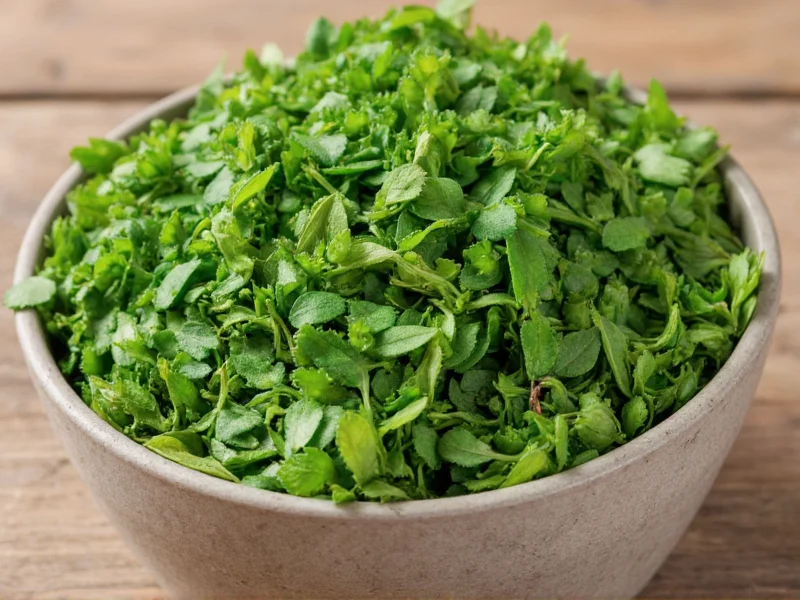When you're in the middle of cooking and realize you've run out of oregano, knowing reliable substitutes can save your dish. Oregano's distinctive earthy, slightly bitter flavor with peppery undertones makes it essential in Mediterranean, Italian, and Mexican cuisines. Understanding which herbs can effectively replace oregano requires knowledge of flavor profiles and appropriate substitution ratios.
Understanding Oregano's Flavor Profile
Oregano (Origanum vulgare) delivers a robust, earthy flavor with warm peppery notes and subtle bitterness. Its intensity varies between fresh and dried forms, with dried oregano being more concentrated. This herb works particularly well with tomatoes, olive oil, garlic, and other Mediterranean ingredients. When seeking oregano replacement options, consider whether your recipe needs the herb's earthiness, slight heat, or ability to complement acidic ingredients.
Top Substitutes for Oregano
Marjoram: The Closest Flavor Match
Marjoram offers the most similar flavor profile to oregano but with a sweeter, milder character. Use it in a 1:1 ratio as a direct substitute. Marjoram works exceptionally well in tomato-based dishes, roasted vegetables, and meat preparations where you want to maintain authenticity without overwhelming bitterness. This oregano alternative shines in delicate dishes where regular oregano might dominate.
Thyme: Earthy Complexity
Thyme provides earthy notes with lemony undertones that can effectively replace oregano in many applications. Use 1.5 times the amount of thyme compared to oregano since it's less potent. Thyme works particularly well in soups, stews, and roasted meat dishes. For Italian cooking substitutions, thyme combined with a pinch of basil creates a more authentic flavor profile than thyme alone.
Basil: Sweet Herb Alternative
Fresh basil makes an excellent oregano replacement in tomato-based dishes, using equal parts. While basil lacks oregano's peppery bite, it contributes complementary sweet notes that work beautifully in pasta sauces, pizzas, and caprese-inspired dishes. For best results in Mediterranean cuisine substitutes, combine basil with a small amount of thyme to approximate oregano's complexity.
Italian Seasoning Blend: Convenient Pantry Option
Most Italian seasoning blends contain oregano along with other complementary herbs like basil, rosemary, and thyme. Use in a 1:1 ratio as an oregano substitute. This option works well when you need a quick solution and already have the blend in your spice cabinet. Check the ingredient list to ensure it contains oregano for the most authentic flavor profile.
| Substitute | Ratio | Best For | Flavor Notes |
|---|---|---|---|
| Marjoram | 1:1 | Tomato sauces, roasted vegetables | Sweeter, milder oregano flavor |
| Thyme | 1.5x | Stews, soups, roasted meats | Earthy with lemony undertones |
| Basil | 1:1 | Pizza, pasta sauces, fresh salads | Sweet with anise notes |
| Italian Seasoning | 1:1 | General Mediterranean dishes | Complex herb blend |
| Dried Mint | 0.5x | Greek dishes, lamb preparations | Cooling with earthy notes |
Specialized Substitutes by Cuisine
For Italian Cooking
When seeking an oregano replacement in Italian recipes, combine equal parts basil and thyme for the most authentic results. This blend captures both the sweetness and earthiness of oregano. For pizza specifically, a mixture of marjoram and a pinch of red pepper flakes creates the closest approximation to traditional oregano flavor.
For Greek Dishes
In Greek cuisine substitutes, dried mint combined with a small amount of thyme works better than single-herb alternatives. Use half the amount of dried mint compared to oregano, as its flavor is more potent. This combination mimics the distinctive flavor profile found in traditional Greek seasoning blends.
For Mexican Recipes
When replacing oregano in Mexican cooking, use Mexican oregano if available, as it has a more citrusy, less sweet profile than Mediterranean oregano. If unavailable, a combination of regular oregano substitute with a pinch of cumin provides better results than single-herb alternatives for authentic flavor.
Fresh vs. Dried Herb Substitutions
Understanding the difference between fresh and dried herb potency is crucial for successful oregano replacement. As a general rule, use three times the amount of fresh herbs compared to dried. So if a recipe calls for 1 teaspoon dried oregano, use 1 tablespoon fresh marjoram or basil as a substitute. Fresh herbs work better added toward the end of cooking, while dried herbs benefit from longer cooking times to release their full flavor.
Creating Your Own Oregano Substitute Blend
For the most versatile oregano alternative, create a custom blend using:
- 2 parts marjoram
- 1 part thyme
- 1 part basil
- Small pinch of red pepper flakes (optional)
Store this mixture in an airtight container for up to six months. This blend works particularly well as an oregano substitute for pizza and pasta dishes, providing complexity that single-herb alternatives can't match.
Substitutes to Avoid
While many herbs can stand in for oregano, some create undesirable flavor profiles. Avoid using rosemary as a primary substitute, as its pine-like intensity overwhelms most dishes that call for oregano. Similarly, cilantro works poorly as an oregano replacement except in specific Mexican recipes, as its citrusy flavor doesn't complement Mediterranean dishes. Sage also makes a poor substitute due to its strong, distinctive flavor that dominates rather than complements.
Adjusting Quantities for Perfect Substitution
When implementing oregano replacement in your recipes, start with slightly less than the recommended substitution ratio, then taste and adjust. Herbs vary in potency based on freshness, growing conditions, and storage. For dried herb alternatives, toast them lightly in a dry pan before use to enhance their flavor and better approximate oregano's intensity. Remember that dried substitutes generally need 10-15 minutes of cooking time to fully integrate their flavors, while fresh herb alternatives should be added in the last 5-10 minutes of preparation.











 浙公网安备
33010002000092号
浙公网安备
33010002000092号 浙B2-20120091-4
浙B2-20120091-4